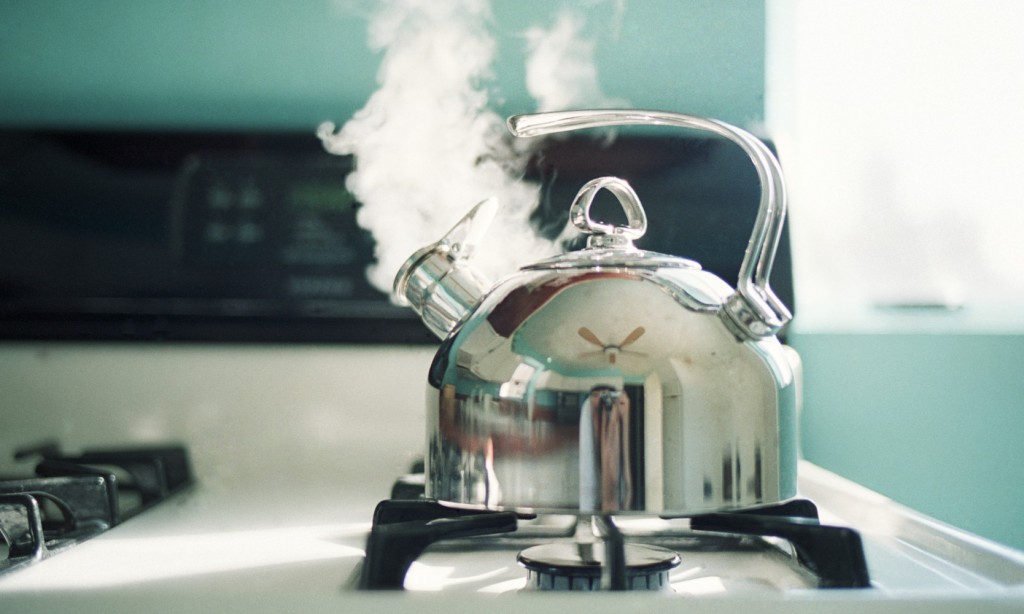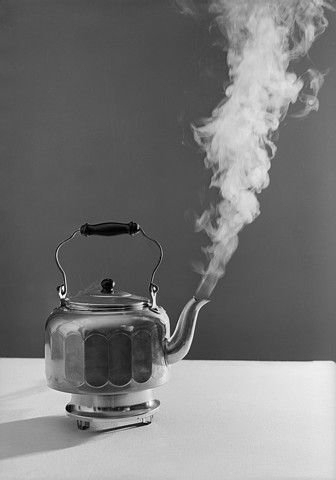Stovetop kettles come in a variety of materials. To name a few types are:
- Aluminum
- Stainless Steel
- Glass kettles
- Copper
- Cast Iron or Tetsubin
Would the type of kettle you use affect the taste of the tea?
The answer is a definite yes, although, for the average consumer, the quality of the water has a much greater effect than the tea kettle itself.
Some people say that cheap, electric kettles made from plastic can make water taste like plastic. I haven’t used plastic kettles for a long time, but for obvious reasons, this is the one to avoid.
Copper has been known to make water tastes metallic, although you can get around that by purchasing a stainless steel kettle with copper base bottom.
Glass has the advantage of not affecting the taste of the tea at all, and most stainless steel models are also fine.
True connoisseurs may want to consider using silver and cast iron kettles.
Silver kettles are expensive, but the water quality is light and fresh. This is especially true for kettles with thin metal.
Being the best conductor of heat has its own downside. This precious metal can be hot to touch, and it doesn’t retain heat well. It is an excellent fit for lightly oxidised teas such as white tea, green tea, the greener oolongs such as the Iron Goddess tea and the raw, young pu-erh tea.
Cast iron kettles produce water that is heavy with more body. It should be used for the heavily oxidised teas such as Wuyi oolongs, red tea, black tea and the old pu-erh tea.
So basically, the minerals of the material in which the kettle is made affects the taste of your tea. Moreover, a seasoned kettle enriches the taste of your tea to another level. Sipping tea from a seasoned kettle is what most tea connoisseurs desire!
Source: amazing-green-tea.com







